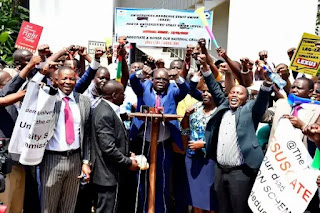Kenya’s higher education sector faces numerous financial challenges that have exacerbated tensions between lecturers and the government. Public universities have been underfunded for years, with allocations falling short of the rapidly increasing operational costs. This has forced many institutions to rely heavily on tuition fees and self-sponsored programs, which are becoming unsustainable as student enrollment fluctuates. The government’s austerity measures have further strained these institutions, delaying salaries and reducing the funds available for critical infrastructure and research development.
One of the key issues is the mismatch between university funding and the rising cost of education. The government allocates about Ksh.70 billion annually to higher education, but this is insufficient to meet the needs of over 40 public universities. In 2023, Vice-Chancellors proposed an increase in tuition fees and government funding, but no concrete solutions were implemented. Additionally, institutions face rising debts, with some reporting liabilities exceeding Ksh.60 billion.
To address these challenges, reforms must focus on creating sustainable funding models. One approach is to increase the Higher Education Loans Board (HELB) budget, ensuring more students access financial aid without burdening universities. Introducing public-private partnerships (PPPs) can also enhance infrastructure development and reduce operational costs. Furthermore, revisiting the Universities Act to streamline governance and resource allocation could ensure accountability and efficiency.
Without decisive action, Kenya risks recurrent strikes and declining quality in its higher education system, undermining the country's development goals. A collaborative effort between the government, educators, and private stakeholders is critical to creating a resilient and inclusive education frame
work.





